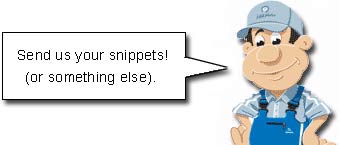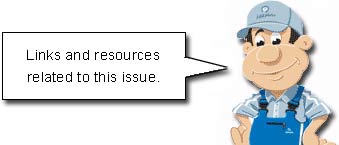|
|
Contents Listing - Articles & Features in this issue
Micky (VH-139). Elementary glider model.
| Micky | |
| MODEL TYPE | SEMI-SCALE GLIDER |
| DESIGNER | J Van Hattum |
| POWER TYPE | Unpowered |
| CONTROL | Free Flight |
| WINGSPAN | 610mm (24") |
| SOURCE | Aeromodeller Magazine, June 1968 Issue |
| SHIPPING WEIGHT (Printed) |
0.25kg |
Article Snippets
FIRST PARAGRAPHS OF BUILD ARTICLE:
"ALTHOUGH 'MICKY' is a simple to build small glider, it is a good and safe flyer, well capable of being towed up to a height of a hundred feet or so. Being small and very light - total weight is less than two ounces - it has proved almost indestructible when handled more with enthusiasm than experience by children under ten, so there need be no fear that mistakes will be followed by destruction. Materials required are specified on the plan, Apart from some items, the model is made of medium hard balsa. If you cannot obtain the lengths given, just buy the longer sheets and strips and keep what is left for your next model.
Few tools are needed to build such a simple model, but you really must have a decently flat pine building board of about 12 x 24 inches. If you intend to continue your aeromodelling career, a larger board would be better. To cut balsa a good cutting tool is essential and a steel ruler goes with it for cutting straight lines. An old hacksaw blade may also serve this purpose. For finishing you need a sandpaper block . this is simply a hardwood block of about 1/2 x 2 inches, 6 inches long, around which medium fine sandpaper is fastened tightly. As most models you may build later will have some parts made from three-ply, this material has also been used in this model, so you may learn to work it.
There is only one way to cut three-ply and that is with a fretsaw or razor saw. The former implies the use of a fretsaw cutting frame, which is clamped to the tabletop. For finishing rough edges of three-ply a small file is needed. The towhook is bent from a bit of paper-binder with a pair of pliers, but it is assumed that these will be in the home toolchest. Just a few remarks on cutting balsa. It is soft and very easily cut, which makes it an ideal material, especially for the beginner. But this also means that it is very easy to cut too far or slip the knife inside the boundary line drawn on the sheet. So always cut slightly outside the line and finish by sanding, taking care not to remove too much material. When cutting a curved line, always follow the direction which ensures that when the knife tends to follow the grain of the wood, it is carried away from the curve.
Curved cuts are best made in a couple of stages. cutting in one easy movement is only learnt after some practice.It is often said by laymen that aeromodellers must be marvellously patient people to be able to produce intricate models. Well, maybe, but the kind of patience they must develop consists in not hurrying any job and having the sense to leave until tomorrow what cannot be carefully done today. So just be indifferent to stories of how Mr X built a large glider in one weekend and irritating remarks by friends that a Micky could easily be made in one afternoon. Just work carefully and avoid a rush-job, which is generally a shoddy job at the best.
Now plan the parts on the 1/16 inch sheet so that you are sure that they can all l find a place. You can just use the straight side of the sheet for the two wing panels and the other for one of the fuselage sides, placing the other fuselage side and the tailplane along the straight edges of the other sheet. this saves some cutting. Cut the smaller parts from the remaining material, with the grain running as shown on the plan. When you have cut and sanded both fuselage sides to identical shape, glue to one of them the 1/8 inch square longerons and uprights. As the longerons are long and there is much area to glue, the traditional balsa cement dries rather too quickly and forces one to hurry the job. So it is better to use white PVA glue for all jobs that take time for putting the parts together. That also applies to sticking the spars and ribs to the wings.
Use the glue as instructed by the makers. The longerons are fixed with some pressure to one side by sticking pins through them right into the building board. Either build straight on the plan or on a sheet of paper. white paper used for lining cupboards is perfect for the job. Rub plan or paper with a cake of soap to prevent the work sticking to the board. Glue pressed from the joint should not be wiped off, as this will leave a hard stain when the job dries, which cannot be removed by sanding. Better leave it to dry and peel off later with the cutting tool, taking care not to remove the wood. The rest of the fuselage is straightforward and the plan explains the procedure.
The wing is built in two halves. Note that they are 'handed'. that is they are not identical, as there are two ribs close together in what will be the centre-section. When the two panels are cut, the leading and trailing edges or spars of 1/8 x 3/16 inch are glued along the edges spanwise, just as you glued the longerons to the fuselage sides. When dry, mark the rib-stations and glue the ribs at the tail-end only. When the joint has dried, continue glueing in easy stages as explained on plan. You need 10 ribs W1. and 2 each of W2 and W3..."
"ALTHOUGH 'MICKY' is a simple to build small glider, it is a good and safe flyer, well capable of being towed up to a height of a hundred feet or so. Being small and very light - total weight is less than two ounces - it has proved almost indestructible when handled more with enthusiasm than experience by children under ten, so there need be no fear that mistakes will be followed by destruction. Materials required are specified on the plan, Apart from some items, the model is made of medium hard balsa. If you cannot obtain the lengths given, just buy the longer sheets and strips and keep what is left for your next model.
Few tools are needed to build such a simple model, but you really must have a decently flat pine building board of about 12 x 24 inches. If you intend to continue your aeromodelling career, a larger board would be better. To cut balsa a good cutting tool is essential and a steel ruler goes with it for cutting straight lines. An old hacksaw blade may also serve this purpose. For finishing you need a sandpaper block . this is simply a hardwood block of about 1/2 x 2 inches, 6 inches long, around which medium fine sandpaper is fastened tightly. As most models you may build later will have some parts made from three-ply, this material has also been used in this model, so you may learn to work it.
There is only one way to cut three-ply and that is with a fretsaw or razor saw. The former implies the use of a fretsaw cutting frame, which is clamped to the tabletop. For finishing rough edges of three-ply a small file is needed. The towhook is bent from a bit of paper-binder with a pair of pliers, but it is assumed that these will be in the home toolchest. Just a few remarks on cutting balsa. It is soft and very easily cut, which makes it an ideal material, especially for the beginner. But this also means that it is very easy to cut too far or slip the knife inside the boundary line drawn on the sheet. So always cut slightly outside the line and finish by sanding, taking care not to remove too much material. When cutting a curved line, always follow the direction which ensures that when the knife tends to follow the grain of the wood, it is carried away from the curve.
Curved cuts are best made in a couple of stages. cutting in one easy movement is only learnt after some practice.It is often said by laymen that aeromodellers must be marvellously patient people to be able to produce intricate models. Well, maybe, but the kind of patience they must develop consists in not hurrying any job and having the sense to leave until tomorrow what cannot be carefully done today. So just be indifferent to stories of how Mr X built a large glider in one weekend and irritating remarks by friends that a Micky could easily be made in one afternoon. Just work carefully and avoid a rush-job, which is generally a shoddy job at the best.
Now plan the parts on the 1/16 inch sheet so that you are sure that they can all l find a place. You can just use the straight side of the sheet for the two wing panels and the other for one of the fuselage sides, placing the other fuselage side and the tailplane along the straight edges of the other sheet. this saves some cutting. Cut the smaller parts from the remaining material, with the grain running as shown on the plan. When you have cut and sanded both fuselage sides to identical shape, glue to one of them the 1/8 inch square longerons and uprights. As the longerons are long and there is much area to glue, the traditional balsa cement dries rather too quickly and forces one to hurry the job. So it is better to use white PVA glue for all jobs that take time for putting the parts together. That also applies to sticking the spars and ribs to the wings.
Use the glue as instructed by the makers. The longerons are fixed with some pressure to one side by sticking pins through them right into the building board. Either build straight on the plan or on a sheet of paper. white paper used for lining cupboards is perfect for the job. Rub plan or paper with a cake of soap to prevent the work sticking to the board. Glue pressed from the joint should not be wiped off, as this will leave a hard stain when the job dries, which cannot be removed by sanding. Better leave it to dry and peel off later with the cutting tool, taking care not to remove the wood. The rest of the fuselage is straightforward and the plan explains the procedure.
The wing is built in two halves. Note that they are 'handed'. that is they are not identical, as there are two ribs close together in what will be the centre-section. When the two panels are cut, the leading and trailing edges or spars of 1/8 x 3/16 inch are glued along the edges spanwise, just as you glued the longerons to the fuselage sides. When dry, mark the rib-stations and glue the ribs at the tail-end only. When the joint has dried, continue glueing in easy stages as explained on plan. You need 10 ribs W1. and 2 each of W2 and W3..."



